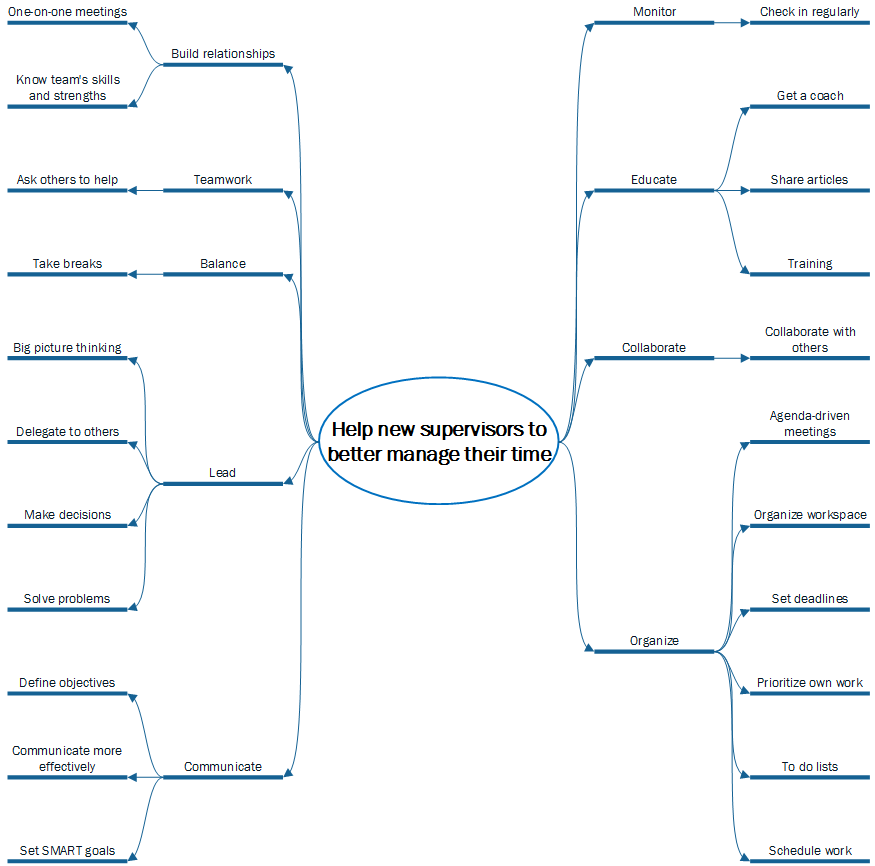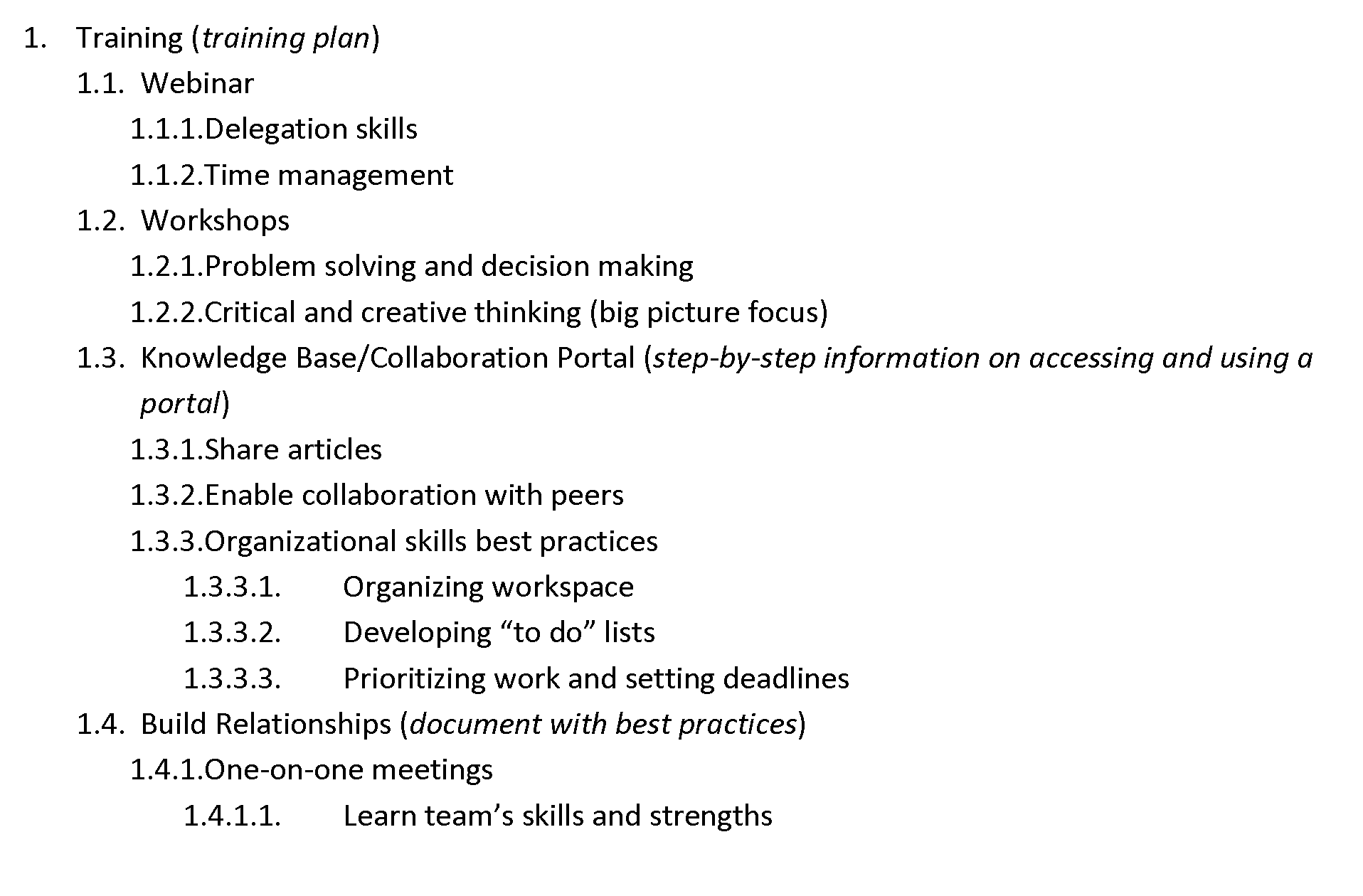A mind map is a diagram that organizes information in a visual format. It is created around a central idea. Mind maps enables for organizing information around a complex topic. Mind mapping enables you to organize information you gather from different sources. Mind mapping helps in breaking down complex information so that you can more easily develop an outline to move forward.
Let’s look at an example.
Let’s assume you want to help new supervisors to better manage their time. You see a need here because a number of new supervisors in the organization are struggling with getting the work done. You did research on the topic in a number of ways:
- Surveyed individuals who were promoted to supervisory roles within the last two years
- Asked friends who worked at other organizations what they considered best practices for supervisors to better manage time
- Did external research from a variety of magazines, blogs and books to get ideas on best practices for time management
You gathered all the ideas and started a mind map (Exhibit 1.)

Exhibit 1
Exhibit 2 depicts the mind map further developed, grouping some of the ideas that naturally come together.

Exhibit 2
Exhibit 3 depicts an outline (partially completed) based on the mind map in Exhibit 2.
Help New Supervisors to Better Manage Their Time

Exhibit 3
With this outline, three written documents will be created:
- A training plan
- Step-by-step information on accessing and using a portal
- A document of best practices in building relationships
As can be seen from this example, a mind map enables for taking a number of ideas on how to help new supervisors better manage their time (Exhibit 1,) organizing those ideas by categorizing, or grouping, them (Exhibit 2;) and then determining three written documents to assist new supervisors in managing their time more effectively (Exhibit 3.)


